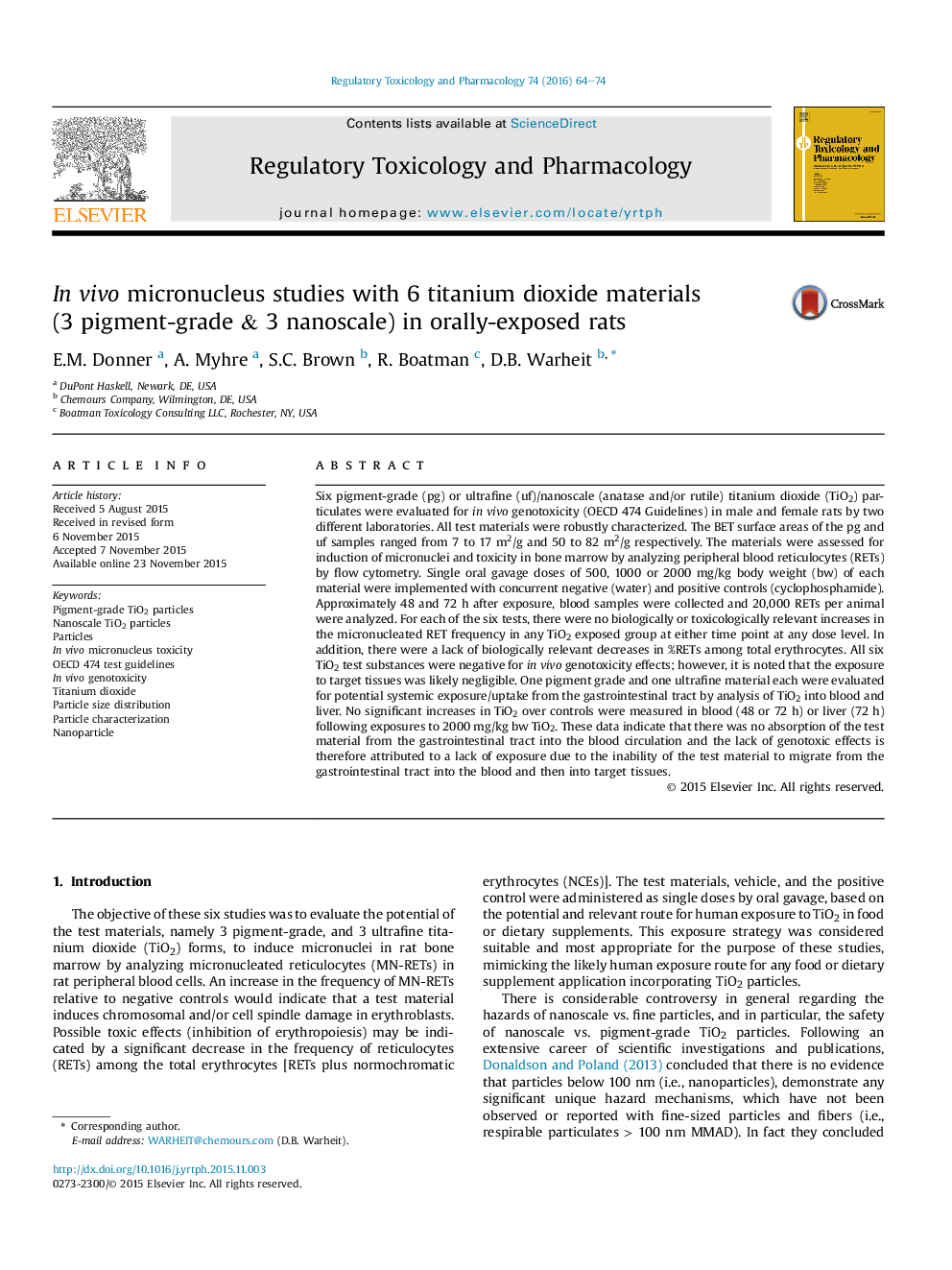| Article ID | Journal | Published Year | Pages | File Type |
|---|---|---|---|---|
| 5856079 | Regulatory Toxicology and Pharmacology | 2016 | 11 Pages |
Abstract
Six pigment-grade (pg) or ultrafine (uf)/nanoscale (anatase and/or rutile) titanium dioxide (TiO2) particulates were evaluated for in vivo genotoxicity (OECD 474 Guidelines) in male and female rats by two different laboratories. All test materials were robustly characterized. The BET surface areas of the pg and uf samples ranged from 7 to 17 m2/g and 50 to 82 m2/g respectively. The materials were assessed for induction of micronuclei and toxicity in bone marrow by analyzing peripheral blood reticulocytes (RETs) by flow cytometry. Single oral gavage doses of 500, 1000 or 2000 mg/kg body weight (bw) of each material were implemented with concurrent negative (water) and positive controls (cyclophosphamide). Approximately 48 and 72 h after exposure, blood samples were collected and 20,000 RETs per animal were analyzed. For each of the six tests, there were no biologically or toxicologically relevant increases in the micronucleated RET frequency in any TiO2 exposed group at either time point at any dose level. In addition, there were a lack of biologically relevant decreases in %RETs among total erythrocytes. All six TiO2 test substances were negative for in vivo genotoxicity effects; however, it is noted that the exposure to target tissues was likely negligible. One pigment grade and one ultrafine material each were evaluated for potential systemic exposure/uptake from the gastrointestinal tract by analysis of TiO2 into blood and liver. No significant increases in TiO2 over controls were measured in blood (48 or 72 h) or liver (72 h) following exposures to 2000 mg/kg bw TiO2. These data indicate that there was no absorption of the test material from the gastrointestinal tract into the blood circulation and the lack of genotoxic effects is therefore attributed to a lack of exposure due to the inability of the test material to migrate from the gastrointestinal tract into the blood and then into target tissues.
Related Topics
Life Sciences
Environmental Science
Health, Toxicology and Mutagenesis
Authors
E.M. Donner, A. Myhre, S.C. Brown, R. Boatman, D.B. Warheit,
